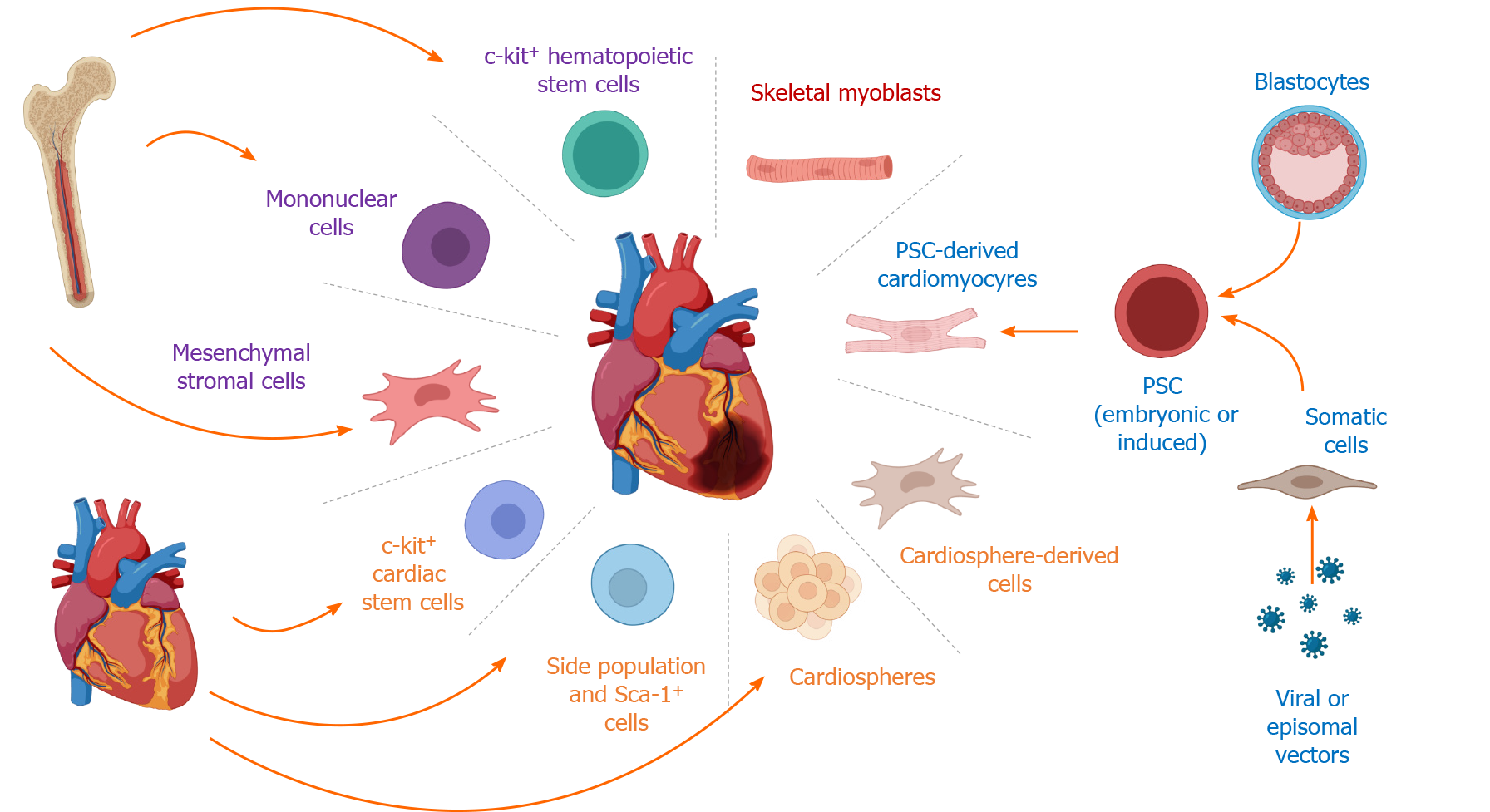Copyright
©The Author(s) 2021.
World J Stem Cells. Sep 26, 2021; 13(9): 1231-1247
Published online Sep 26, 2021. doi: 10.4252/wjsc.v13.i9.1231
Published online Sep 26, 2021. doi: 10.4252/wjsc.v13.i9.1231
Figure 1 Cell-based therapies for ischemic heart disease.
Cells can be obtained from several different sources. Skeletal myoblasts (red) were the first cell type used for cell therapies but induced life-threatening arrhythmias due to myocardial uncoupling. Bone marrow-derived cells (purple) include mononuclear cells, mesenchymal stromal cells, and c-kit+ hematopoietic stem cells, which can be used in autologous or allogeneic therapies. Unfortunately, promising results of bone marrow-derived cells in animal models were not reproduced in clinical trials. Several groups proposed the existence of cardiac stem cells (orange), and their therapeutic potential was tested in animal models and clinical trials. However, recent lineage tracing experiments demonstrate that myocardial regeneration occurs through cardiomyocyte proliferation. Thus, de novo cardiomyocyte generation from pluripotent stem cells (embryonic or induced) remains the most promising approach for cell-based therapies, provided that the field can overcome limitations such as immune rejection and the induction of arrhythmias. PSC: Pluripotent stem cell; Sca-1: Stem cell antigen-1.
- Citation: Kasai-Brunswick TH, Carvalho AB, Campos de Carvalho AC. Stem cell therapies in cardiac diseases: Current status and future possibilities. World J Stem Cells 2021; 13(9): 1231-1247
- URL: https://www.wjgnet.com/1948-0210/full/v13/i9/1231.htm
- DOI: https://dx.doi.org/10.4252/wjsc.v13.i9.1231









